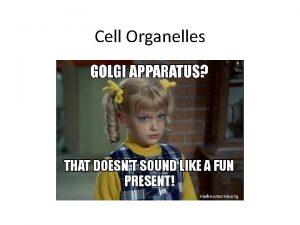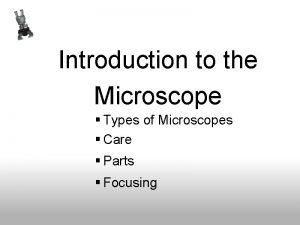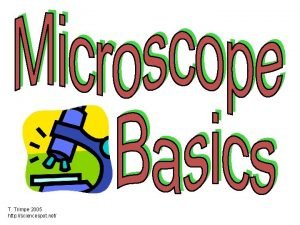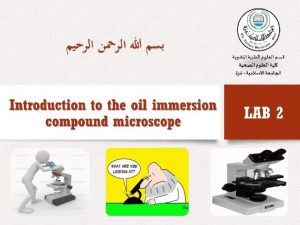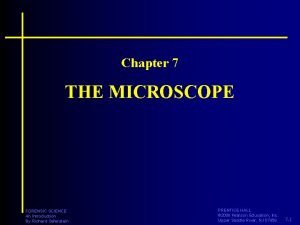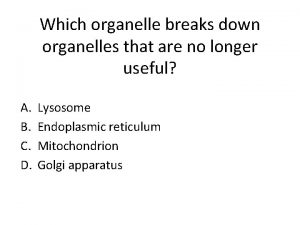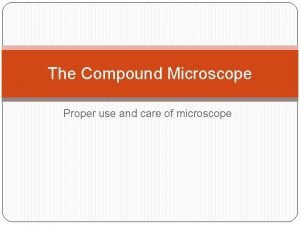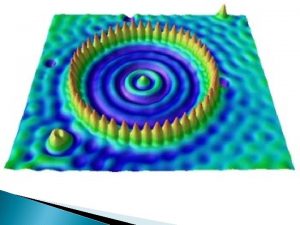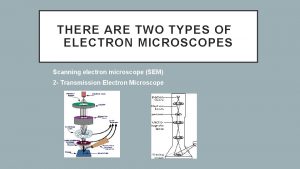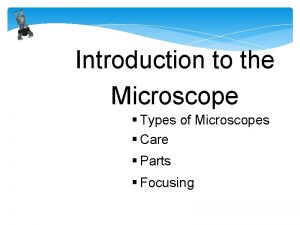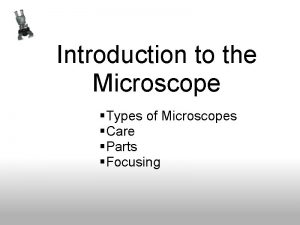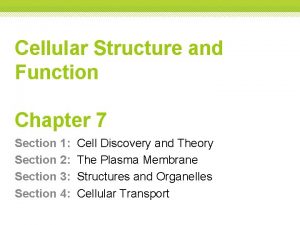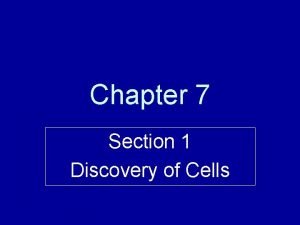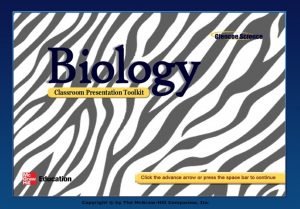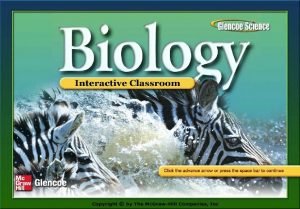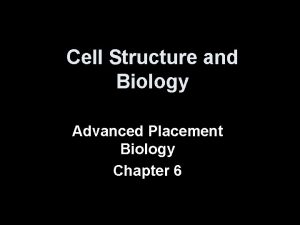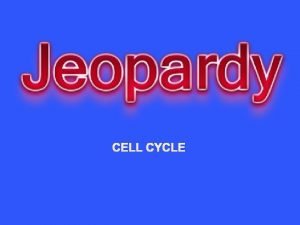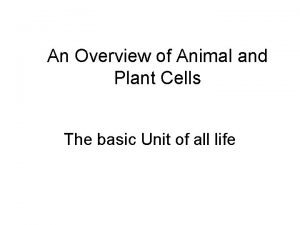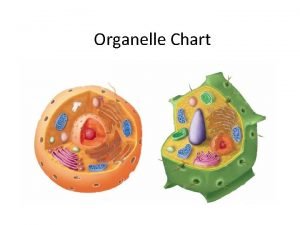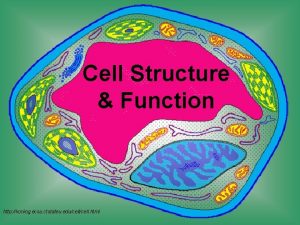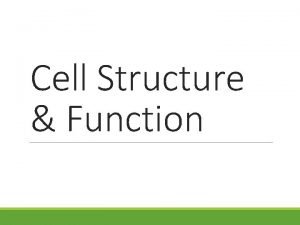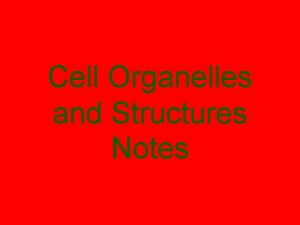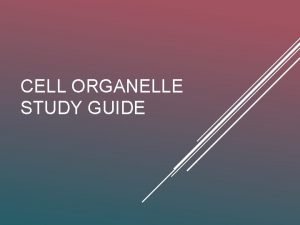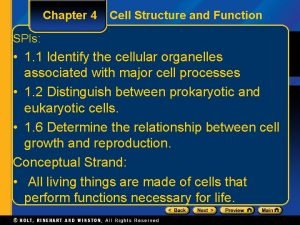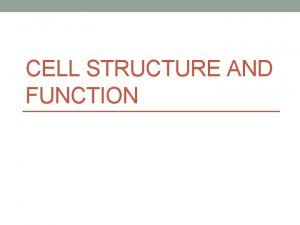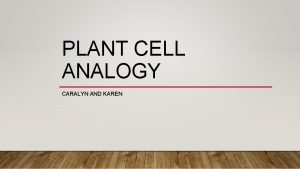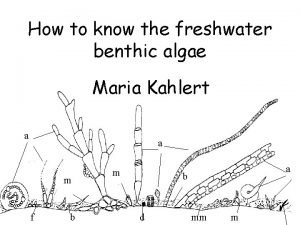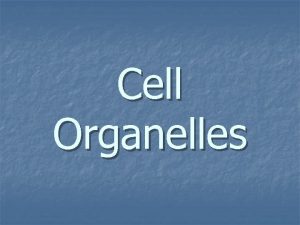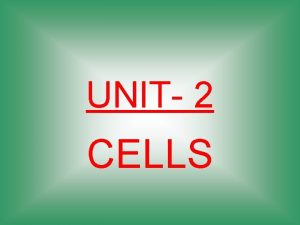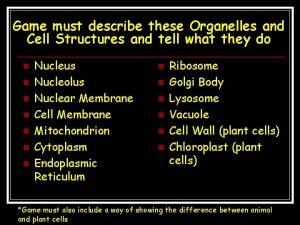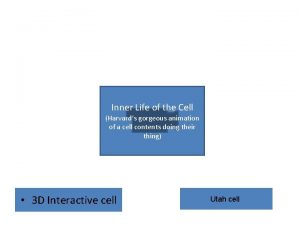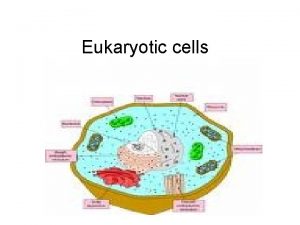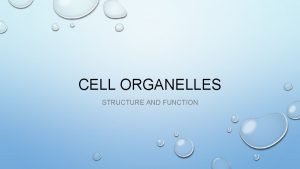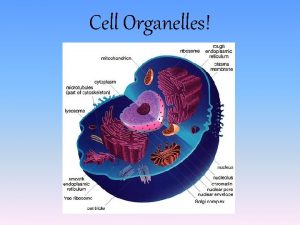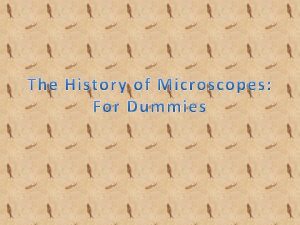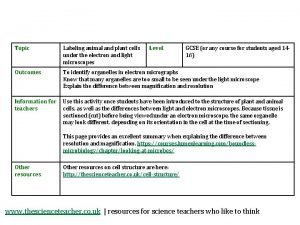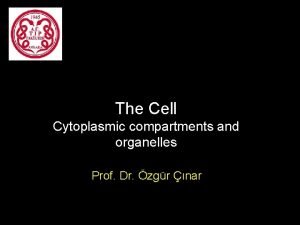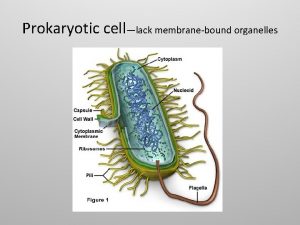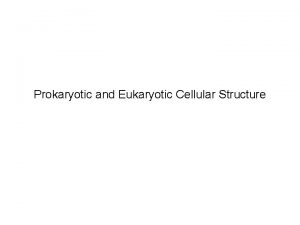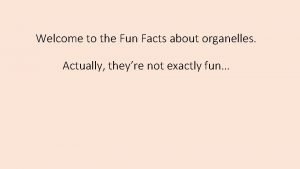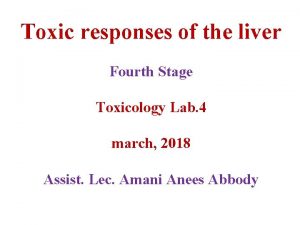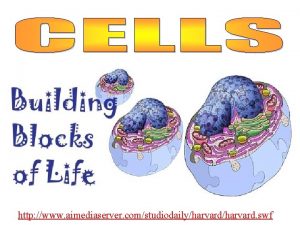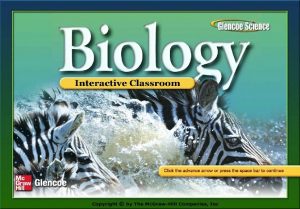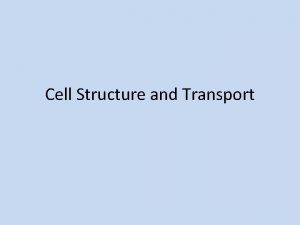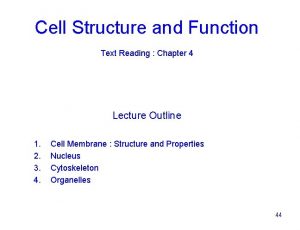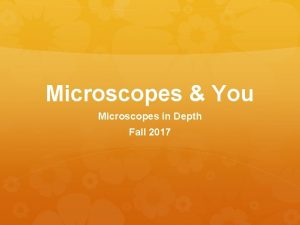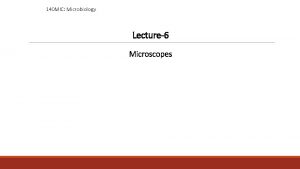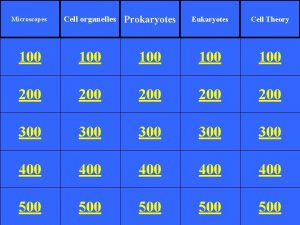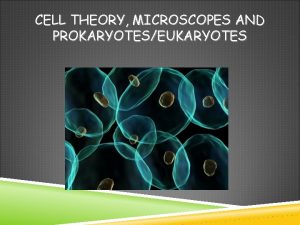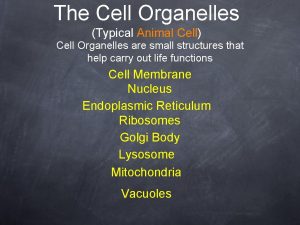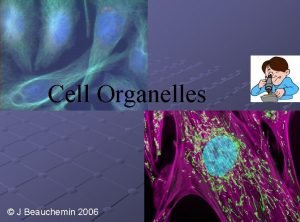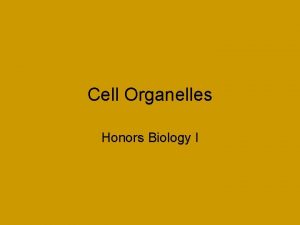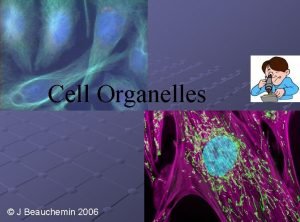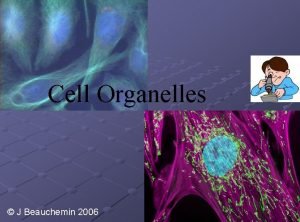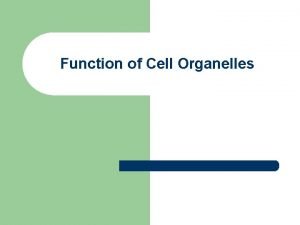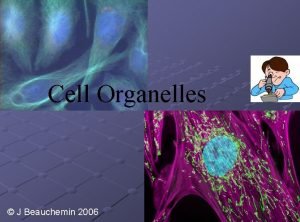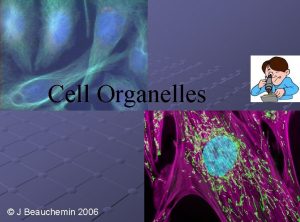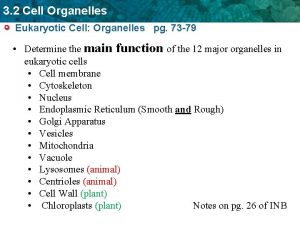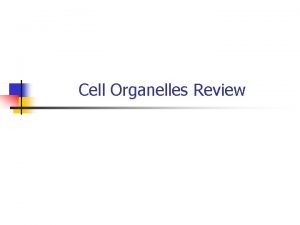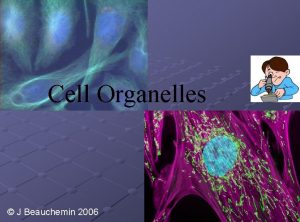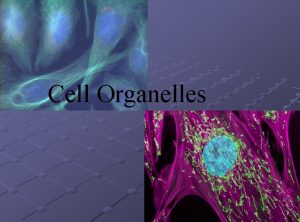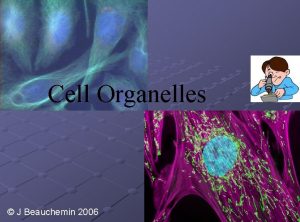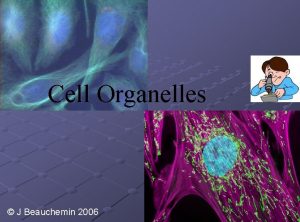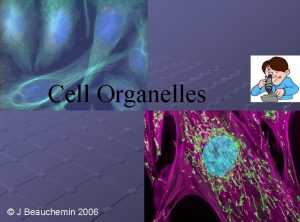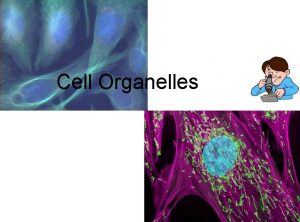Cell Organelles Transport Cell Discovery Microscopes CELL THEORY































































- Slides: 63

Cell Organelles & Transport

Cell Discovery & Microscopes

CELL THEORY (1838) Theodor Schwann Matthias Schleiden • All living things are made from one or more cells. • All cells come from other cells. • The cell is the smallest form of life.

Microscopy Bright-Field (Compound) Light Microscope Use light rays focused by glass lenses.

Microscopy Transmission Electron Microscope (TEM) Uses electrons passing through specimens; focused by magnets.

Microscopy Scanning Electron Microscope (SEM) Uses electrons scanned across metalcoated specimen.

Images using TEM & SEM Microscope Flea Avian Flu

Images using TEM & SEM Microscope Spider Pollen

Images using TEM & SEM Microscope E. Coli Bed Bug

Plasma Membrane Aka: Cell Membrane Aka: Bilayer Phospholipid


Cell Membrane - Function Regulates the traffic of chemicals into and out of the cell.

Cell Membrane - Characteristic It is fluid (consistency of olive oil)

Cell Membrane - Composition Phospholipids (bilayer) Proteins Carbohydrates (attached to proteins)

Phospholipid Bilayer 1. 2. 3. 4. “Sandwich” of molecules. Hydrophilic phosphates face water. Hydrophobic “tails” tucked inside. Selective barrier


Phospholipid Bilayer “Selectivity” • Nonpolar molecules cross easily – O 2 – CO 2 • Polar molecules & ions do not – – – Sugars H+ K+ Na+ Cl-

Lipid – Key Membrane Component glycerol fatty acids “Regular” Lipid Phospholipid

Cell Organelles

Ø Nucleus : Brain of the cell Ø Nucleus controls all activities of the cell Ø Nucleolus is in the center & controls protein synthesis Ø Nuclear Membrane (envelope) protects the nucleus

The Nucleolus Dark-stained spherical body in nucleus where r. RNA and proteins join to form ribosomal subunits.


Ø Ribosomes : Site where proteins are made Ø Ribosomes are found on both the Rough ER & in the cytoplasm

Ribosomes Cooridinate assembly of amino acids into polypeptide chains (i. e. protein synthesis).

Ribosomes Eukaryotic slightly larger than prokaryotic Composed of a large and a small subunit. Each subunit has its own mix of protein and r. RNA.

Ø Rough Endoplasmic Reticulum (ER): network of canals that move material through the cell Ø Has ribosomes where protein synthesis takes place Ø The proteins made here are taken to the outside of the cell

Endoplasmic Reticulum Main manufacturing and transport facility in the cell factory.

Rough ER is: Contiguous with the outer membrane of the nuclear envelope. Studded with ribosomes cytoplasm side. on the


Ø Smooth E. R. (Endoplasmic Retiliculum) No Ribosomes on the smooth E. R. Ø Helps to neutralize poisons and builds lipids

Function of smooth ER 1. Synthetic processes Phospholipids Steroids Fatty acids 2. Forms transport vesicles

Ø Golgi Apparatus : “Warehouse” of the cell. Ø Packages and stores proteins & other molecules to be released by the cell. Ø Produces secretions for the cell

Golgi Apparatus Receives protein-filled vesicles that bud from the ER. Vesicles fuse with membrane of Golgi apparatus.

Golgi Apparatus • Proteins modified as they pass through • Move to outer face after modification. • Vesicles form & move to different locations in cell


Ø Lysosomes : holds digestive enzymes that break down large molecules Ø Gets rid of bacteria & digest worn out cell organelles

Lysosomes Intracellular digestion centers Produced by Golgi Membrane-enclosed vesicles Contains digestive enzymes (function best in acidic environment) Break down organelles

Energy-related Organelles Mitochondria (Plants & animals) Chloroplasts (Plants)

Ø Mitochondria : Power plant of a cell Ø This is where Cellular Respiration occurs in both plant & animal cells Ø ATP which is energy for the cell is made thru cellular respiration

Mitochondria • “Unpacks” captured solar energy (cellular respiration). • Double-membrane organelle • ATP production occurs here. • Found in all organisms except bacteria.

Ø Flagella & Cilia : Hair like structures found on some cells to help with movement Ø The windpipe in animals has cilia to help move mucus & debris out of the lungs

Ø Vacuole : Liquid filled space that stores food, water, & minerals Ø Much larger in plants than in animal cells

Vacuoles • Large membranous sac • Larger than vesicles • Store substances • Vacuoles in protozoans include digestive vacuoles and waterregulating contractile vacuoles.

Ø Chloroplasts : Where photosynthesis occurs in plants Ø In the chloroplast there is a green pigment called chlorophyll which allows plants to use the sun’s energy to make food

Chloroplasts “Packages” light energy from the sun (site for photosythesis). Double membraned organelle. Flattened sacs (thylakoids) piled into stacks of grana with a fluid-filled space around thylakoids called the stroma. Chlorophyll located with the thylakoid membrane.

Ø Cell Wall : Found only in plants, fungi, & bacteria Ø Rigid structure outside cell membrane that gives support & protection Ø The cell wall is made of cellulose a type of carbohydrate

Smooth ER Flagella Lysosome Cytoplasm Cell Membrane Mitochondria Cilia Nuclear Membrane Nucleolus Nucleus Rough ER Golgi Complex Ribosomes

Nuclear Membrane Nucleolus Nucleus Rough ER Smooth ER Golgi Complex Vacuole Mitochondria Chloroplast Cell Membrane Cell Wall


Three Modes of Passive Transport Movement of particles across the cell membrane without using energy • Diffusion • Facilitated Diffusion • Osmosis

Diffusion The net movement of particles from an area of higher concentration to an area of lower concentration. Initial Conditions Diffusion Low High Low

Dynamic Equilibrium § Reached when diffusion of material into the cell equals diffusion of material out of the cell § Molecules continue to move, but the overall concentration remains the same.

Molecules are always on the move!


Water Balance in Animal Cells (Osmosis) This is a special term used to describe the passive transport of water across a selectively permeable membrane.

Isotonic Solution § Water and dissolved substances diffuse into and out of the cell at the same rate. Plant Cell Blood Cell

Hypotonic Solution § Solute concentration is higher inside the cell. § Water diffuses into the cell. Plant Cell Blood Cell

Hypertonic Solution § Solute concentration is higher outside the cell. § Water diffuses out of the cell. Plant Cell Blood Cell

Active Transport Movement of particles across the cell membrane using energy Active Transport Using Carrier Proteins



Transport of Large Molecules Exocytosis Endocytosis.

Endocytosis § Process by which the cell surrounds and takes particles into the cell Exocytosis § Secretion of material out of the plasma membrane
 Discovery of cell organelles
Discovery of cell organelles Types of microscopes
Types of microscopes Sciencespot.net
Sciencespot.net Microscope purpose
Microscope purpose Forensic science microscopes
Forensic science microscopes Which organelle breaks down organelles that are no
Which organelle breaks down organelles that are no Care of compound microscope
Care of compound microscope Electron microscopes main idea
Electron microscopes main idea Types of electron microscopes
Types of electron microscopes Types of microscopes
Types of microscopes Types of microscopes
Types of microscopes Chapter 7 section 4 cellular transport
Chapter 7 section 4 cellular transport Chapter 7 section 1 cell discovery and theory
Chapter 7 section 1 cell discovery and theory History of cell
History of cell Section 1 cell discovery and theory
Section 1 cell discovery and theory Label the organelles in the composite cell
Label the organelles in the composite cell During interphase a cell grows, duplicates organelles, and
During interphase a cell grows, duplicates organelles, and Plant cell
Plant cell Facts about vacuole
Facts about vacuole ;
; Nucleoid region
Nucleoid region Endoplasmic reticulum nickname
Endoplasmic reticulum nickname Organelle of walls and studs
Organelle of walls and studs Section 4-3 cell organelles and features
Section 4-3 cell organelles and features Organelles graphic organizer
Organelles graphic organizer Mitochondria double membrane function
Mitochondria double membrane function Mitochondria house analogy
Mitochondria house analogy Aamfb
Aamfb Cell structure and function graphic organizer
Cell structure and function graphic organizer What is this cell
What is this cell Cell organelles song
Cell organelles song Cell organelles game
Cell organelles game Inner life of a cell harvard
Inner life of a cell harvard Centrosoma
Centrosoma Function of golgi vesicles
Function of golgi vesicles Organelle
Organelle Protist cell organelles
Protist cell organelles Antiporters
Antiporters Primary active transport and secondary active transport
Primary active transport and secondary active transport Now answer the following questions
Now answer the following questions Active vs passive transport venn diagram
Active vs passive transport venn diagram Unlike passive transport, active transport requires
Unlike passive transport, active transport requires Primary active transport vs secondary active transport
Primary active transport vs secondary active transport Bioflix activity membrane transport active transport
Bioflix activity membrane transport active transport Passive trnasport
Passive trnasport Bioflix membrane transport
Bioflix membrane transport Discovery learning theory
Discovery learning theory The discovery of grounded theory
The discovery of grounded theory Sooles elav ainurakne
Sooles elav ainurakne Robert hooke 1665
Robert hooke 1665 The scientist mathias schleiden studied _______ in ______.
The scientist mathias schleiden studied _______ in ______. Animal cell under microscope labeled
Animal cell under microscope labeled Nonmembranous organelles
Nonmembranous organelles Membrane bound organelles
Membrane bound organelles Flagella
Flagella Difference between light dependent and light independent
Difference between light dependent and light independent Animal cell and plant cell venn diagram
Animal cell and plant cell venn diagram Primary active transport
Primary active transport Fun facts about lysosomes
Fun facts about lysosomes Liver cells organelles
Liver cells organelles E. coli organelles
E. coli organelles Chapter 7 section 3 structures and organelles
Chapter 7 section 3 structures and organelles E. coli organelles
E. coli organelles Cytoskeleton organelles
Cytoskeleton organelles
